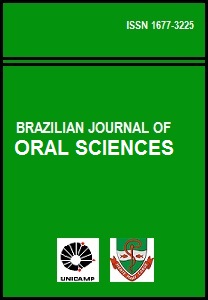Abstract
Aim: To evaluate the sealing ability of gutta-percha-nano-HA and Resilon-Epiphany by electrochemical method and micro-computed tomography (CT) scan at 48 h and 20 months using three different obturation techniques (cold lateral condensation technique, warm vertical condensation - System B, and warm vertical condensation with vibration - Down-Pak). Methods: 150 human mandibular single-rooted premolars were prepared and randomly allocated into 6 groups of 25 specimens each, and filled with either gutta-percha-nano HA or Resilon-Epiphany with the three different obturation techniques (cold lateral, warm vertical - System B, and warm vertical with vibration - Down-Pak). Electrochemical microleakage method was used to measure the microleakage after 48 h and after 20 months, and a micro-CT Scanner 1072 was used to evaluate the quality of obturation after 48 h. Results: Group 6 (Resilon-epiphany/Down-Pak technique) had the highest microleakage value, followed by Group 2 (Gutta-percha-nano HA/ System B technique), Group 4 (Resilon-Epiphany/Lateral condensation technique), Group 3 (Gutta-percha-nano HA/Down-Pak technique), Group 5 (Resilon-Epiphany/System B technique), and Group 1 (Gutta-percha-nano HA/Lateral condensation technique) with the values of 4.69 (6.06) KÙ, 3.88 (2.92) KÙ, 3.77 (3.75) KÙ, 3.38 (3.92) KÙ, 2.64 (2.90) KÙ, and 2.44 (4.34) KÙ, respectively. No significant difference in the quantity of leakage was observed for each root in each group between the two tested filling materials and their sealers (p=0.143). Micro CT scan investigations revealed more micro-voids in the Resilon-Epiphany Group obturated with DownPak technique. Conclusions: Nano-hydroxyapatite sealer with gutta-percha filling material provided a reasonable seal compared with Epiphany sealer and Resilon filling material.The Brazilian Journal of Oral Sciences uses the Creative Commons license (CC), thus preserving the integrity of the articles in an open access environment.
Downloads
Download data is not yet available.

